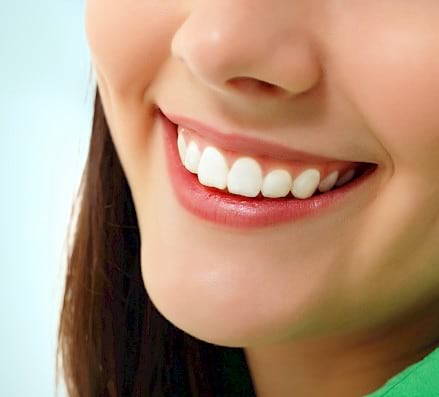What Does Your Tooth Color Mean?

The shape and color of your teeth is as unique as your fingerprint. The original color of your teeth was determined during their development. The thickness of the enamel combined with the darkness of the underlying dentin affect just how white they look.
Over time, everyone’s teeth change colors. Aging is one of the most common causes of yellow teeth. You can get a good idea of your general dental health by taking a deeper look at the colors that you see.
Aim for White to Light Yellow Shades
Seeing a sparkling white smile on the movie screen might leave you wanting to hide your teeth behind your hand. If you worry that your smile is slightly yellow, then you can rest assured that most people’s teeth aren’t snow white.
Tooth enamel is slightly translucent. This allows the dentin below the surface to sometimes show through. Dentin also darkens as you age, which can further increase the yellow color of your teeth. Regular dental cleanings can help you feel confident that any yellow shades are natural rather than stains.
Be Wary of a Tooth That Suddenly Turns Gray

As a general rule, teeth rarely change colors quickly. Instead, natural yellowing tends to occur over a period of years. A tooth that suddenly turns gray might be reacting to an infection or dental trauma. This type of color change is not reversible. A root canal and restoration is usually the best treatment for a dying tooth. A dental crown will cover the old tooth so that the color matches the rest of your smile.
Get Brown and Black Spots Checked for Decay
Brown spots can come from several different sources. Tobacco products, tea and dark-colored soda can all create brown stains. A brown spot that seems to have always been there might merely be a sign that you ingested too much fluoride as a child. Early tooth decay often begins as brown spots that get darker as the enamel breaks down.
Black spots could be stains. These sometimes show up in the ridges of your teeth. Older metal fillings can darken and cause parts of your tooth to look black. Since black areas are often cavities, you’ll want to get them checked out as soon as possible.
Find Out Your Options to Whiten Discolorations

Tooth colors can be caused by issues that affect the surface of the enamel. These are called extrinsic stains. They can also be impacted by developmental issues or infections occurring within the tooth and can be harder to treat.
Stains from food and other materials on the surface of your teeth respond well to teeth whitening. Your dentist can also treat stains by polishing your teeth during a dental cleaning. If the discolorations are beneath the surface, your Tempe dentist can use bonding, veneers or a crown to cover them up.
The color of your teeth reveals many things about your dental health and general lifestyle. Watching for changes in the color can help you catch developing oral health issues faster. You can also use keeping a bright white smile as motivation to keep up with your hygiene routine and dental checkups. Although some yellowing is normal with age, your hard work with brushing and flossing can keep your smile looking beautiful for a lifetime.